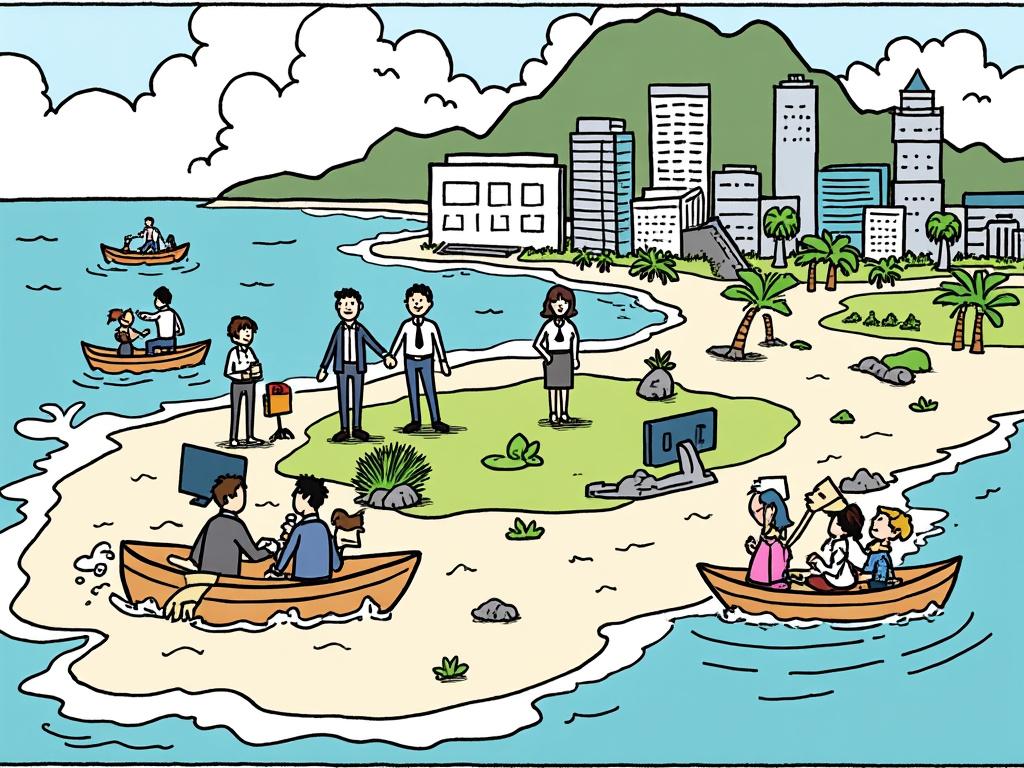
Top 10 Islands to Visit in Greece: Your Ultimate Mediterranean Adventure Guide
Reading time: 12 minutes
Table of Contents
- Introduction: Why Greek Islands Captivate Millions
- The Ultimate Top 10 Greek Islands
- Strategic Island-Hopping Planning
- Island Comparison: Finding Your Perfect Match
- Insider Tips for Island Excellence
- Your Island Adventure Blueprint
- Frequently Asked Questions
Introduction: Why Greek Islands Captivate Millions
Ever wondered what makes Greece’s 6,000 islands so irresistibly magnetic? You’re about to discover why over 33 million visitors annually choose Greek islands as their Mediterranean escape. Here’s the straight talk: successful island-hopping isn’t about visiting the most islands—it’s about strategic selection based on your travel personality.
Picture this scenario: You have 10 days, a moderate budget, and dreams of crystal-clear waters, ancient history, and authentic Greek culture. Which islands deliver the most bang for your euro? Let’s dive deep and transform your Greek island confusion into a strategic adventure plan.
Key Island Selection Insights:
- Understanding each island’s unique character
- Matching destinations to your travel style
- Optimizing time and budget allocation
- Avoiding overtourism traps
The Ultimate Top 10 Greek Islands
1. Santorini: The Instagram Icon
Santorini tops every list for good reason—its volcanic cliffs and whitewashed villages create photography gold. But here’s what most guides won’t tell you: visit during shoulder season (May or October) to avoid the 17,000 daily cruise passengers that swamp Oia during peak summer.
Best for: Romantic getaways, luxury experiences, wine enthusiasts
Insider tip: Stay in Imerovigli instead of Oia for similar sunset views with 50% fewer crowds.
2. Mykonos: Party Paradise Meets Cycladic Charm
Mykonos masterfully balances wild nightlife with traditional Greek beauty. The island generates €2.5 billion annually from tourism, making it Greece’s most economically successful island destination.
Reality check: Beach club day passes cost €30-80, but public beaches like Fokos offer the same turquoise waters for free.
3. Crete: The Complete Greek Experience
As Greece’s largest island, Crete offers everything from Minoan palaces to pristine beaches. With 1,046 kilometers of coastline, you could spend a month here and barely scratch the surface.
Strategic approach: Focus on one region—western Crete for beaches and Chania’s charm, or central for Heraklion’s archaeological treasures.
4. Rhodes: Medieval Marvel
Rhodes seamlessly blends crusader history with beach resort vibes. The medieval Old Town, a UNESCO World Heritage site, houses 6,000 residents within fortress walls—Europe’s largest inhabited medieval settlement.
5. Corfu: Venetian Elegance
Corfu’s Italian influences set it apart from typical Cycladic islands. The island’s 200+ beaches range from party spots to secluded coves, satisfying every beach preference.
6. Paros: The Authentic Alternative
Smart travelers choose Paros over overcrowded Mykonos. With similar Cycladic architecture but 60% fewer tourists, Paros offers authentic Greek island life without compromising on beauty.
7. Naxos: Family-Friendly Gem
Naxos provides excellent value—accommodation costs 40% less than Santorini while offering equally stunning beaches and rich mythological history.
8. Zakynthos: Natural Wonder
Home to the famous Shipwreck Beach, Zakynthos attracts nature lovers and Instagram enthusiasts alike. The island also serves as a crucial nesting ground for endangered loggerhead sea turtles.
9. Milos: Volcanic Beauty
Milos offers otherworldly volcanic landscapes with unique colored beaches—from white pumice at Sarakiniko to red volcanic sand at Paleochori.
10. Hydra: Car-Free Sophistication
Hydra’s ban on motorized vehicles creates a uniquely peaceful atmosphere. Artists and writers have long favored this island for its inspiring tranquility and preserved 18th-century architecture.
Strategic Island-Hopping Planning
Timing Your Visit
Here’s the data-driven approach to Greek island timing:
Seasonal Tourism Volume
90% capacity
65% capacity
25% capacity
Transportation Strategy
Island-hopping success depends on smart ferry planning. Greece’s ferry network connects most islands, but routes vary dramatically by season. Book ferries 48 hours in advance during summer—last-minute travelers often find themselves stranded.
Pro tip: Consider Athens as your strategic base. Many international visitors explore houses for sale in athens as they fall in love with Greek culture and consider establishing a permanent Mediterranean presence.
Island Comparison: Finding Your Perfect Match
| Island | Best For | Average Daily Cost | Crowd Level | Beach Quality |
|---|---|---|---|---|
| Santorini | Romance, Luxury | €120-200 | Very High | Unique (Volcanic) |
| Mykonos | Nightlife, Luxury | €100-180 | Very High | Excellent |
| Paros | Authentic Culture | €60-100 | Moderate | Excellent |
| Naxos | Families, Value | €50-90 | Low-Moderate | Outstanding |
| Milos | Nature, Photography | €55-95 | Low | Unique (Volcanic) |
Insider Tips for Island Excellence
Accommodation Strategies
Book accommodations 3-4 months ahead for summer travel, but here’s the insider secret: many family-run hotels don’t appear on major booking sites. Contact local tourism offices directly for authentic, budget-friendly options.
Common Challenges and Solutions
Challenge 1: Ferry Delays and Cancellations
Solution: Always build buffer days into your itinerary. Greek ferries depend on weather conditions—summer’s meltemi winds can disrupt schedules unexpectedly.
Challenge 2: Overtourism at Popular Spots
Solution: Visit famous locations before 9 AM or after 6 PM. Oia’s sunset crowds peak at 7-8 PM, but sunrise offers equally stunning colors with minimal crowds.
Challenge 3: Limited ATMs on Smaller Islands
Solution: Carry sufficient cash. Many smaller islands have only one ATM, which frequently runs empty during peak season.
Budget Optimization
Smart travelers save 30-40% by avoiding resort areas and staying in traditional villages. Local tavernas offer authentic meals for €12-18 per person, while tourist zones charge €25-35 for similar quality.
Money-saving insider tip: Buy ferry tickets at the port rather than online to avoid booking fees—savings of €3-8 per ticket add up quickly during island-hopping adventures.
Your Island Adventure Blueprint
Ready to transform your Greek island dreams into reality? Here’s your strategic roadmap for crafting an unforgettable Mediterranean adventure:
Immediate Action Steps:
- Define Your Travel Personality: Are you seeking romantic sunsets, archaeological wonders, or beach paradise? Match your interests to our top 10 recommendations.
- Plan Your Route Strategically: Group nearby islands together—combine Paros and Naxos, or link Santorini with Milos for volcanic diversity.
- Book Smart, Not Early: Reserve accommodations 3-4 months ahead, but wait for ferry bookings until 1-2 weeks before travel for weather flexibility.
- Pack for Versatility: Bring layers for evening breezes, comfortable walking shoes for cobblestone streets, and reef-safe sunscreen for pristine waters.
- Embrace Local Rhythm: Greek islands operate on “island time”—build flexibility into your schedule and savor the slower pace.
The Greek islands represent more than vacation destinations—they’re gateways to ancient cultures, natural wonders, and life-changing perspectives. As sustainable tourism becomes increasingly important, your thoughtful island choices support local communities while preserving these Mediterranean treasures for future generations.
Which Greek island speaks to your soul? Will you chase Santorini’s legendary sunsets, discover Milos’s hidden volcanic beaches, or find your perfect balance on authentic Paros?
Frequently Asked Questions
How many Greek islands should I visit in one trip?
For first-time visitors, 2-3 islands in 7-10 days provides the perfect balance. This allows 2-3 days per island—enough time to explore beyond tourist hotspots without feeling rushed. Experienced island-hoppers might manage 4-5 islands in two weeks, but remember that ferry travel consumes valuable vacation time.
What’s the best way to travel between Greek islands?
Ferries remain the most reliable and scenic option for island-hopping. High-speed ferries cost 20-30% more but cut travel time in half—worth it for shorter trips. Domestic flights work for distant islands like Crete or Rhodes, but booking ferries 48 hours in advance during summer ensures availability and better pricing.
Is it safe to drink tap water on Greek islands?
Tap water quality varies significantly between islands. Larger islands like Crete and Rhodes generally have safe drinking water, while smaller islands may rely on desalination or shipped water with different taste profiles. Most locals and experienced travelers stick to bottled water for drinking while using tap water for brushing teeth and washing—a practical approach that avoids any potential stomach issues during your precious vacation time.

Article reviewed by Lydia Hartmann, Greenfield Development Strategist | Permits to Profitability, on June 6, 2025
